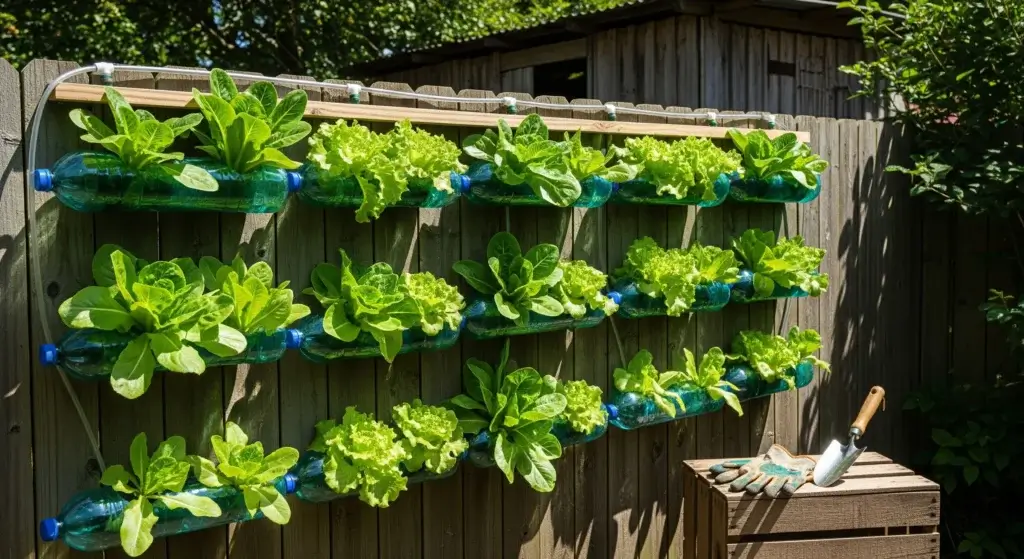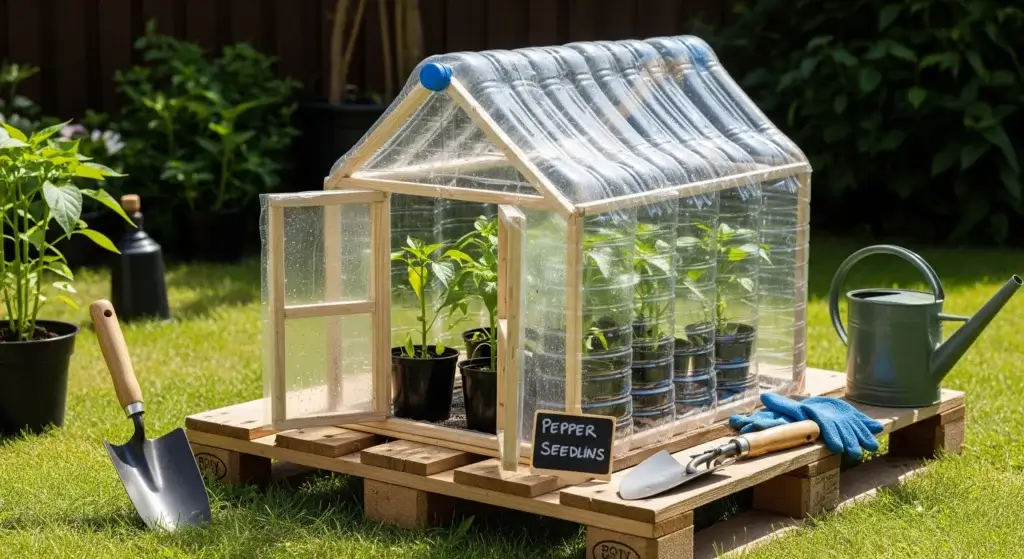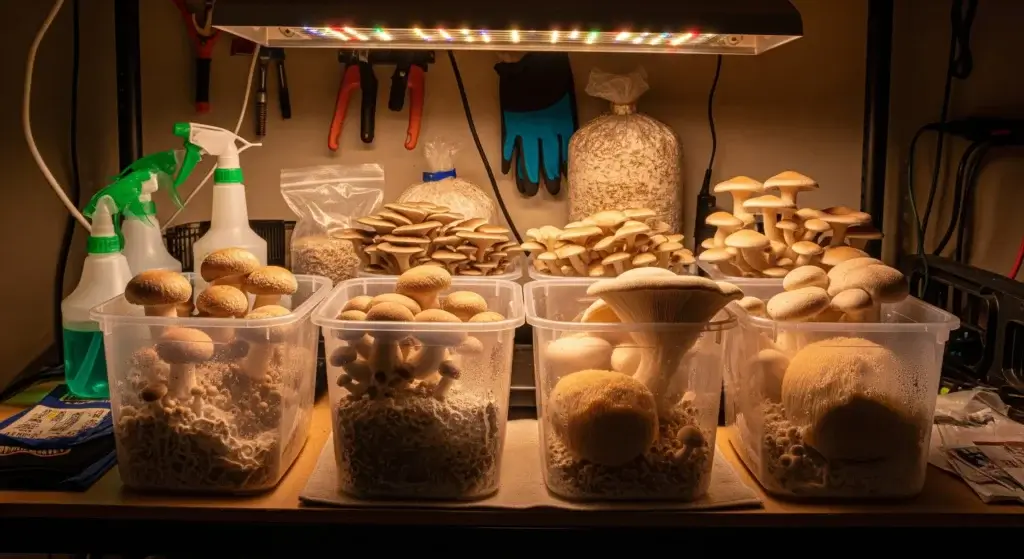
Apartment living doesn’t mean giving up on plants.
If you’re short on space, a DIY living wall is a smart way to grow up—literally.
It turns any blank wall into a garden that looks good and cleans your air.
Whether you’re a plant pro or just getting started, building one is easier than it sounds.
This guide breaks down how to plan, build, and keep your vertical garden alive—without needing a backyard.
Why Choose a Living Wall for Your Apartment?
Space optimization that actually works
Let’s be real—floor space in apartments is limited.
A living wall works because it grows up, not out.
You don’t need a balcony or a big corner.
Just a bit of wall space, and suddenly you’ve got room for herbs, greens, even small veggies.
Health benefits you can breathe
Plants clean up the air. They pull out CO₂, trap pollutants, and give back oxygen.
One square meter of green wall can remove over 2 kg of CO₂ a year.
That’s not magic—it’s just plants doing their thing.
For stuffy apartments, this makes a difference you can feel.
Mental wellness and stress reduction
Green isn’t just a color—it’s calming.
Looking at plants lowers stress and helps with focus.
In a city apartment, where you’re surrounded by concrete and screens, a wall of green gives your brain a break.
It’s like nature’s version of white noise.
Year-round growing season
No sun? No problem. Living walls indoors mean no seasons to worry about.
With the right setup (think grow lights and a simple watering plan), you can harvest fresh herbs in January and keep your space feeling alive all year long.

Planning Your Living Wall: Key Considerations
Assess your space and light conditions
Start with the basics. How much wall space do you have? Does it get any light?
- South-facing = lots of sun (great for herbs or succulents)
- East/west = some light (good for most houseplants)
- North-facing = low light (stick to low-light plants like pothos or ferns)
Also, look at:
- How close it is to a plug (you might need grow lights)
- Whether there’s water nearby
- If furniture will be in the way
- Whether the wall can hold extra weight
- How to avoid water damage to floors or walls
Choose your living wall system
You don’t need a fancy setup. Here are a few solid DIY options:
- Fabric pockets: Easy to hang, cheap, and beginner-friendly
- Trellis + planters: Good if you want to mix and match
- Pallets: Nice if you like the rustic look—but seal the wood
- Grid systems: Great for small pots and rearranging plants later
Each one has trade-offs. Pockets dry out faster. Pallets need prep. Grids need more setup. Choose what fits your space and skills.
Budget Planning
You can get started for around $100-300.
More complex setups (lights, irrigation, fancier planters) can hit $500 or more.
Here’s where your money might go:
- Plants and soil
- Planters or containers
- Mounting gear
- Lights if the space is dim
- Watering tools or a drip system
- Replacing dead plants (it happens)
Start small. Build as you go. Focus on what works for your wall, your budget, and your bandwidth.
Step-by-Step Construction Guide
Materials and tools needed
Basic materials
- Something to mount: metal grid, wood frame, or trellis
- Containers: pockets, small pots, or DIY planters
- Good potting mix (not garden soil—it’s too dense)
- Wall anchors and screws (make sure they fit your wall type)
- A waterproof layer (plastic sheet or landscape fabric)
- Something for drainage: gravel, perlite, or clay pebbles
Tools required:
- Drill + bits
- Level
- Measuring tape
- Screwdriver
- Utility knife
- Watering can or spray bottle
Installation process
Step 1: Plan it out
Sketch a quick layout. Nothing fancy—just figure out where your plants will go.
Group ones with the same light and water needs. It’ll make your life easier later.
Step 2: Mount the frame
Find the studs (don’t skip this). Mark where your frame will go and drill it in.
Use anchors that can handle weight—plants + soil + water add up fast. Double-check it’s level.
Step 3: Protect your wall
Add a waterproof backing between the frame and the wall.
This isn’t optional—especially in rentals.
Even a little leak can mean mold or a lost deposit.
Step 4: Attach the planters
Secure your pots or pockets to the frame.
Don’t cram them—leave space so air can move and plants can grow.
Add a drainage layer to the bottom of each container to keep roots from sitting in water.
Step 5: Add the soil
Use a potting mix made for containers. It drains well and won’t compact.
Don’t use regular garden soil—it’ll get heavy and soggy.

Plant Selection for Apartment Living Walls
Best plants for low to moderate light
Not every apartment gets full sun—and that’s fine. These plants don’t mind.
- Pothos: Tough, grows fast, and forgives you if you forget to water.
- Spider plant: Pops out baby plants like crazy. Easy to share or replant.
- Peace lily: Likes shade. Gives you those white blooms and helps clean the air.
- Philodendron: Especially the heartleaf type. Grows well on a wall and doesn’t need much light.
Herbs for kitchen gardens
If you’re growing near a window, use part of the wall for herbs you’ll actually use.
- Basil: Loves light. Pinch off the flowers to keep it going.
- Mint: Grows fast. Keep it in its own container—it spreads like crazy.
- Oregano: Handles dry spells. Great for vertical setups.
- Thyme: Small and tidy. Doesn’t need much water or space.
Low-maintenance succulents
Short on time or forgetful with watering? Go with these. Just make sure they get enough light.
- Echeveria & Sedum: Great texture. Don’t overwater.
- Jade plant: Stores water in thick leaves. Tough to kill.
- String of pearls: Looks wild hanging down. Needs bright light.
- Hens and chicks: Little rosettes that multiply over time. Good for tight spots.
Start with what fits your space and habits. No need to overcomplicate it—stick with plants that match your light and lifestyle.
Maintenance and Care
Watering techniques
Overwatering is the mistake most people make—especially with vertical setups. Here’s how to stay on top of it:
- Start from the top: Water the highest plants first. Let gravity do the rest.
- Check, don’t guess: Some spots dry out faster than others. Stick a finger in the soil. Dry? Water. Still damp? Wait.
- Slow down in winter: Plants grow less when it’s cold. That means less water, not more.
Fertilization schedule
Potted plants lose nutrients faster. But don’t overdo it with fertilizer.
- Use a water-soluble, balanced fertilizer
- Mix it at half-strength
- Once every 2–4 weeks in spring and summer
- Skip or cut way back in fall and winter
Pruning and Maintenance
Your wall’s going to need a little upkeep. Here’s what to stay on top of:
- Dead flowers? Snip them. It keeps plants blooming.
- Leggy or wild growth? Prune it back so everything has space.
- Unhappy plants? If something’s dying, just replace it. No shame in that.
- Dusty leaves? Wipe them gently with a damp cloth. Dust blocks light = less growth.
Plants aren’t furniture—they change. A little regular care goes a long way.
Keep it simple, and your wall will stay green and growing.
Troubleshooting Common Issues
Drainage problems
If your plants are turning yellow, smell weird, or look moldy—it’s probably a drainage problem.
This is the #1 killer in vertical setups.
Fix it by:
- Adding more drainage (gravel, perlite, clay pebbles)
- Watering less often
- Spacing plants out so air can move around
- Swapping in containers with real drainage holes (not just pretty ones)
Pest management
Aphids, spider mites, and fungus gnats love warm, wet corners. You’re not a bad plant parent—it just happens.
Stay ahead of it:
- Isolate new plants for a week before adding them to the wall
- Keep air moving—stagnant air = bug party
- Don’t overwater. Wet soil attracts gnats
- Use neem oil or try releasing ladybugs indoors (yep, it works)
Light deficiency
If your plants look pale, grow long and stringy, or stop blooming—it’s probably light.
How to help:
- Add a grow light. LED strips or clip-ons work great
- Rotate plants around if you can
- Use shade-loving plants in dark spots (like ferns or pothos)
- Add a mirror or use light-colored walls to bounce light back
The good news? Most of these problems are easy to fix if you catch them early.
Keep an eye on your plants—they’ll usually tell you what’s wrong.

Advanced Living Wall Features
Automated irrigation systems
If your wall’s getting bigger—or you just forget to water—set up a simple drip system.
It doesn’t have to be fancy. You can connect it to a timer and let it run a few minutes a day. Saves time, saves plants.
Integrated lighting
Not all lights help plants. Look for LED grow lights made for indoor gardening (not just “bright” bulbs).
Mount them above or at an angle. Most come with timers, so you can mimic daylight even in a dark room.
Modular expansion
Start small, but plan like you’ll want more. Modular setups let you add sections without rebuilding everything.
Think IKEA shelving, but for plants.
Add rows as your plant addiction grows—or when you find that perfect fern you didn’t plan for.
Seasonal Care and Long-Term Success
Spring preparation
This is the best time to give your wall some love.
- Swap out old potting mix—plants need fresh nutrients
- Trim or split anything getting too crowded
- Add new plants if you’re itching to switch it up
- Start watering and feeding more as growth picks up
Summer management
Things dry out fast in the heat—especially near windows.
- Check soil more often
- Water before things wilt
- If the sun’s blasting in the afternoon, hang a sheer curtain or move a few heat-sensitive plants
Fall transitions
Plants slow down. You should too.
- Cut back on fertilizer
- Start watering less often
- Take out any outdoor plants you stuck in temporarily
- Think ahead for lower light—maybe shift some plants around
Winter care
Not much grows, but you still need to check in.
- Don’t let soil dry out completely
- Make sure they’re getting enough light—this might be when a grow light saves you
- Skip the fertilizer unless something’s actively growing
Wrap-Up: Your Wall, Your Way
A DIY living wall isn’t just pretty—it’s practical.
You’re cleaning your air, growing herbs, and bringing a bit of nature into your apartment without needing much space.
The trick? Plan well, pick the right plants, and stay on top of basic care.
Start small if you’re new to it. Even a tiny wall can make a big difference.
Your setup doesn’t have to be perfect.
Tweak things as you go. Swap plants. Change the layout. Let it grow with you.
Small space? No problem. Your wall can still be your green escape.



